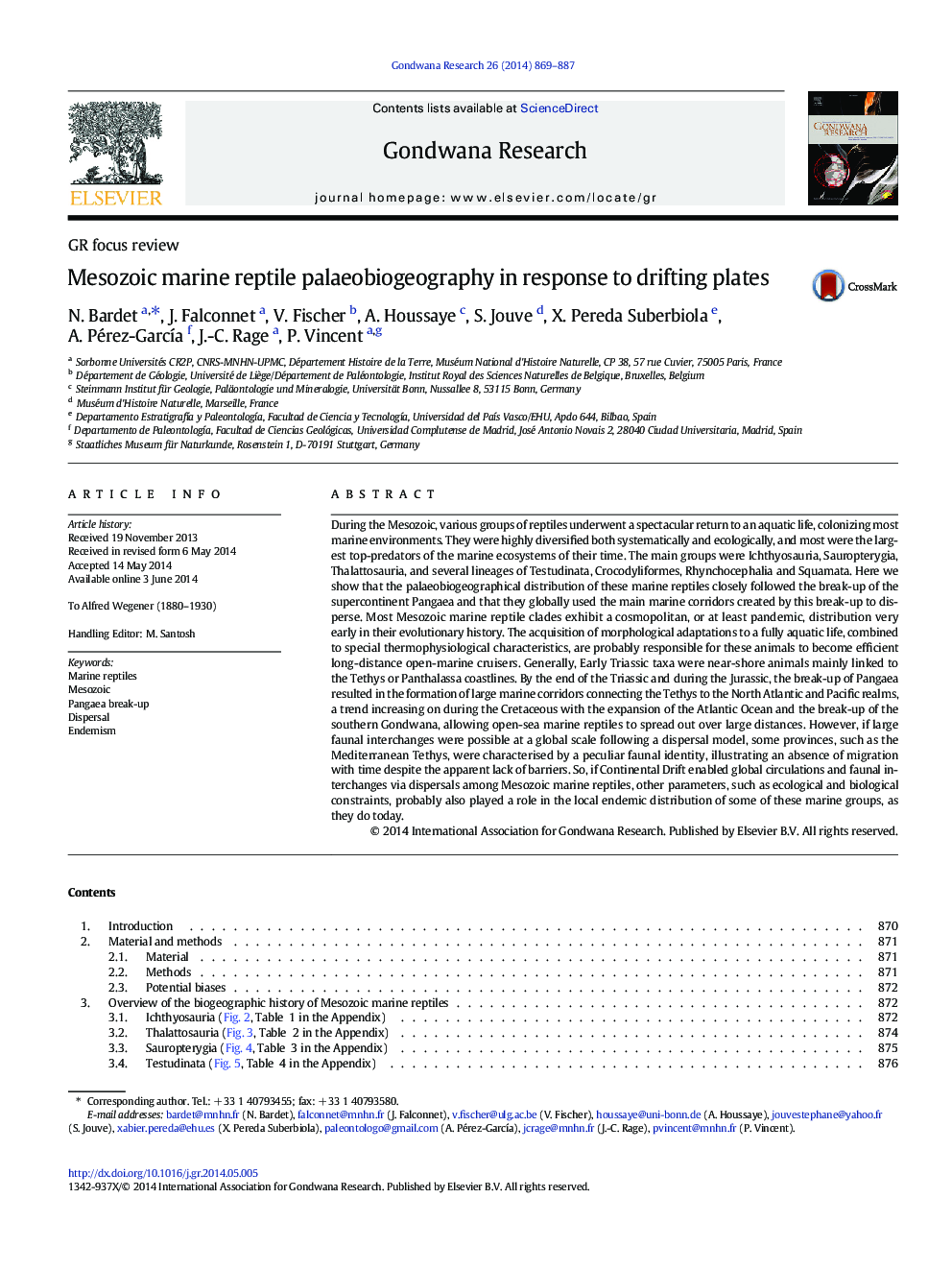| کد مقاله | کد نشریه | سال انتشار | مقاله انگلیسی | نسخه تمام متن |
|---|---|---|---|---|
| 4726829 | 1640142 | 2014 | 19 صفحه PDF | دانلود رایگان |
• Reptiles underwent a spectacular return to an aquatic life during the Mesozoic.
• Their palaeobiogeographical distribution closely followed the break-up of Pangaea.
• They globally used the marine corridors created by this break-up to disperse.
During the Mesozoic, various groups of reptiles underwent a spectacular return to an aquatic life, colonizing most marine environments. They were highly diversified both systematically and ecologically, and most were the largest top-predators of the marine ecosystems of their time. The main groups were Ichthyosauria, Sauropterygia, Thalattosauria, and several lineages of Testudinata, Crocodyliformes, Rhynchocephalia and Squamata. Here we show that the palaeobiogeographical distribution of these marine reptiles closely followed the break-up of the supercontinent Pangaea and that they globally used the main marine corridors created by this break-up to disperse. Most Mesozoic marine reptile clades exhibit a cosmopolitan, or at least pandemic, distribution very early in their evolutionary history. The acquisition of morphological adaptations to a fully aquatic life, combined to special thermophysiological characteristics, are probably responsible for these animals to become efficient long-distance open-marine cruisers. Generally, Early Triassic taxa were near-shore animals mainly linked to the Tethys or Panthalassa coastlines. By the end of the Triassic and during the Jurassic, the break-up of Pangaea resulted in the formation of large marine corridors connecting the Tethys to the North Atlantic and Pacific realms, a trend increasing on during the Cretaceous with the expansion of the Atlantic Ocean and the break-up of the southern Gondwana, allowing open-sea marine reptiles to spread out over large distances. However, if large faunal interchanges were possible at a global scale following a dispersal model, some provinces, such as the Mediterranean Tethys, were characterised by a peculiar faunal identity, illustrating an absence of migration with time despite the apparent lack of barriers. So, if Continental Drift enabled global circulations and faunal interchanges via dispersals among Mesozoic marine reptiles, other parameters, such as ecological and biological constraints, probably also played a role in the local endemic distribution of some of these marine groups, as they do today.
Figure optionsDownload as PowerPoint slide
Journal: Gondwana Research - Volume 26, Issues 3–4, November 2014, Pages 869–887
